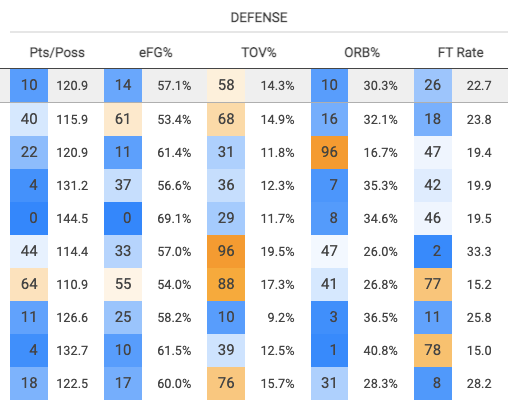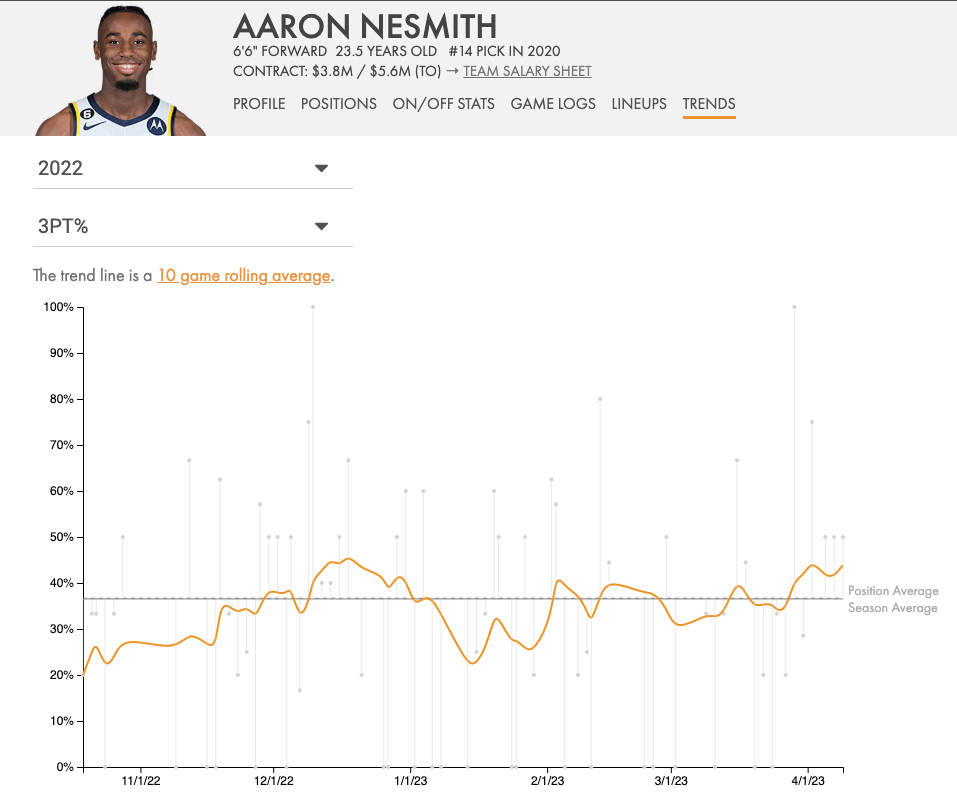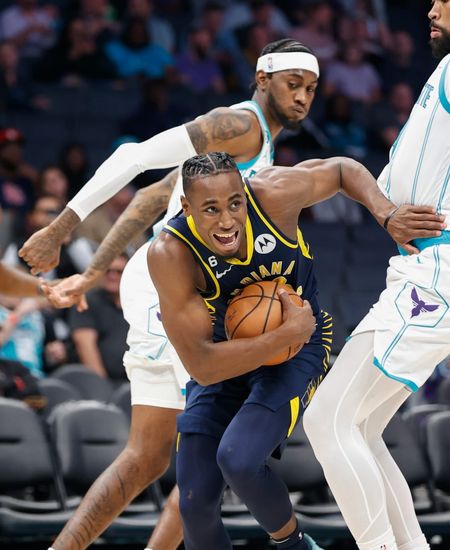Aaron Nesmith will run through a wall for you. At least that's how his teammates feel about him.
In some ways he's the embodiment of the new era Pacers. When the front office traded away Sabonis it signaled the end of the Turbonis years, a span defined by ill fitting parts and unabating injuries. Many of us wondered what identity the new team would take on. A year later, the answer to that question is still up in the air but the picture is coming into focus.
The team is going to be created more or less in the image of its leader, Tyrese Haliburton. Players that elevate the team's camaraderie, competitiveness, and ability to play fast paced basketball will thrive. Nesmith generally ticks all three boxes, but will need to become a more consistent shooter to truly prosper.
Where did he come from?
A rebuild is essentially an audition. Where contending teams target players to fill specific roles, rebuilding teams are simply looking for talent. This dichotomy was crystal clear in the trade that brought Nesmith to the Pacers from the Boston Celtics. The Pacers gave up Malcom Brogdon, an older but still effective guard, in exchange for the unknown, namely Nesmith and a draft pick.
The Pacers' modus of operandi has been relying on old draft scouting reports to try and unearth gems buried on other teams' benches. Nesmith, who after being drafted 14th overall in 2020 spent the first two years of his career riding pine behind All Stars Jayson Tatum and Jaylen Brown, fits the bill to a T.
How did he perform in his new role?

Eh...good not great.
On the positive side, Nesmith absolutely looked like a rotation player on an NBA team. His reputation for being willing to run through a wall showed up on the court, where his motor was constantly running. Moreover, Nesmith was asked to play out of position most of the year, logging 74% of his minutes at Power Forward according to Cleaning the Glass. At 6'6, Nesmith is built like a guard/wing, so his willingness to take on bigger, more physical players every night is a testament to his commitment to putting the team over himself.
He also deserves credit for defending some of the league's best players, given that Nesmith was one of two players on the team that resembled anything close to a positive point of attack defender.
All in all, Andrew is the consummate glue guy, doing all the dirty work that doesn't necessarily show up in the stat sheet. He's a tremendous athlete who can fly around and make some jaw dropping plays, including monster dunks on some of the best rim protectors in the game.
this angle of Aaron Nesmith's poster dunk is incredible. pic.twitter.com/RTrSspytSx
— Indiana Pacers (@Pacers) December 30, 2022
power dunk by Aaron Nesmith.👊 pic.twitter.com/OCHB7YHlLD
— Indiana Pacers (@Pacers) January 30, 2023
But whether he's more than a glue guy is not clear. Despite his motor, hustle, and athleticism, he didn't always contribute to winning. The lineups of which he was a member were generally below average defensively.

That's not all of his fault, but it does indicate that he isn't the type of player who can impose his will on the game.
Furthermore, offensively, he was average at best. He posted a middling 112.8 points per 100 shot attempts, putting him in the 49th percentile. Due to his subpar ball handling, he struggled to create for others and turned the ball over more that you'd like for a role player.
Although nobody expects Nesmith to be a primary, or even secondary, ball handler, he is expected to space the floor effectively. While playing for Vanderbilt, Jerry Stackhouse designed a good deal of his offense around Nesmith's ability to shoot threes. Until this year, that ability did not translate to the NBA. In his first two years in Boston, Aaron shot 34% and 21%, respectively. He started this year off slow as well, but to his credit he managed to bring it up to a respectable 36.5% by the end of the year.
When looking at a graph of his three-point shooting percentage over the course of the year, it's clear he's a streaky shooter and needs to find a way to be more consistent if he wants to reliably fill his role.

When he does provide floor spacing, he's a valuable offensive tool. His speed and cutting ability make him a mismatch for opposing forwards, especially when he's playing the four. He was a part of an underused lineup consisting of Haliburton, Mathurin, Hield, Nesmith, and Turner that posted a whopping +48.1 points per possession differential over the course of the year. This speaks to the power of playing fast when your offensive production makes up for any defensive deficiencies.
Going Forward
Nesmith says that he has a clear game plan on what he needs to work on over the summer. He wants to come back next year as an improved ball handler and more impactful defender. Specifically, he says he needs to be able to move his feet better and pick up less reaching fouls.
If he can become a true lock down defender and a more consistent shooter, Nesmith just may graduate from a rotation piece to a starting caliber glue guy.
Subscribe to our email newsletter and unlock access to members-only content and exclusive updates.

Comments